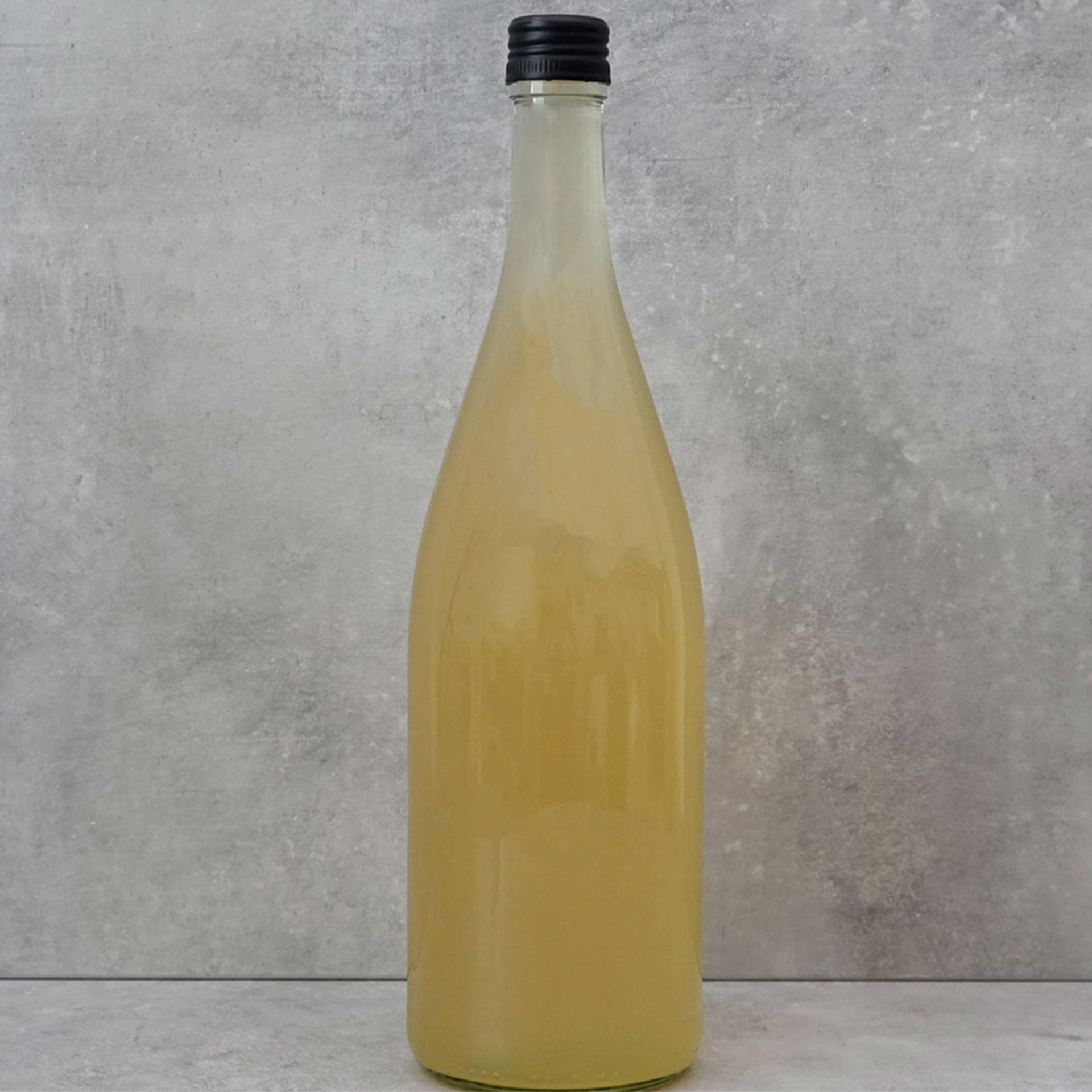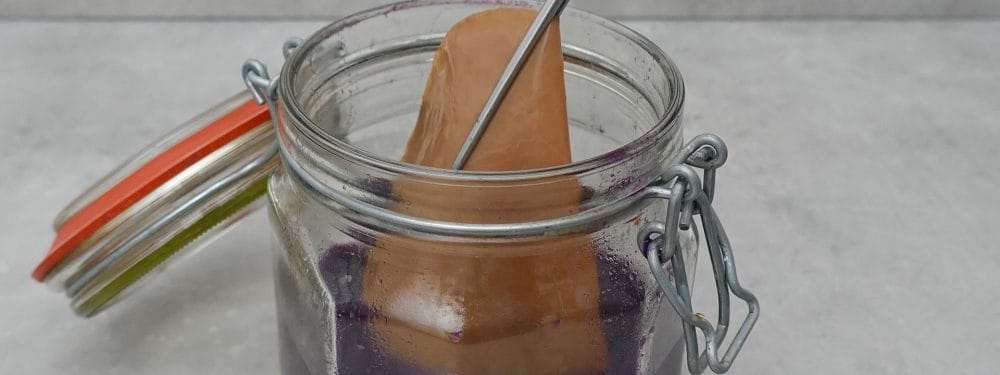Met2 -Now it’s time to drink!
Audiences love sequels, and lurid titles additionally help draw people to theaters. We can only understand this to a limited extent, but our mead production deserves a continuation in any case.
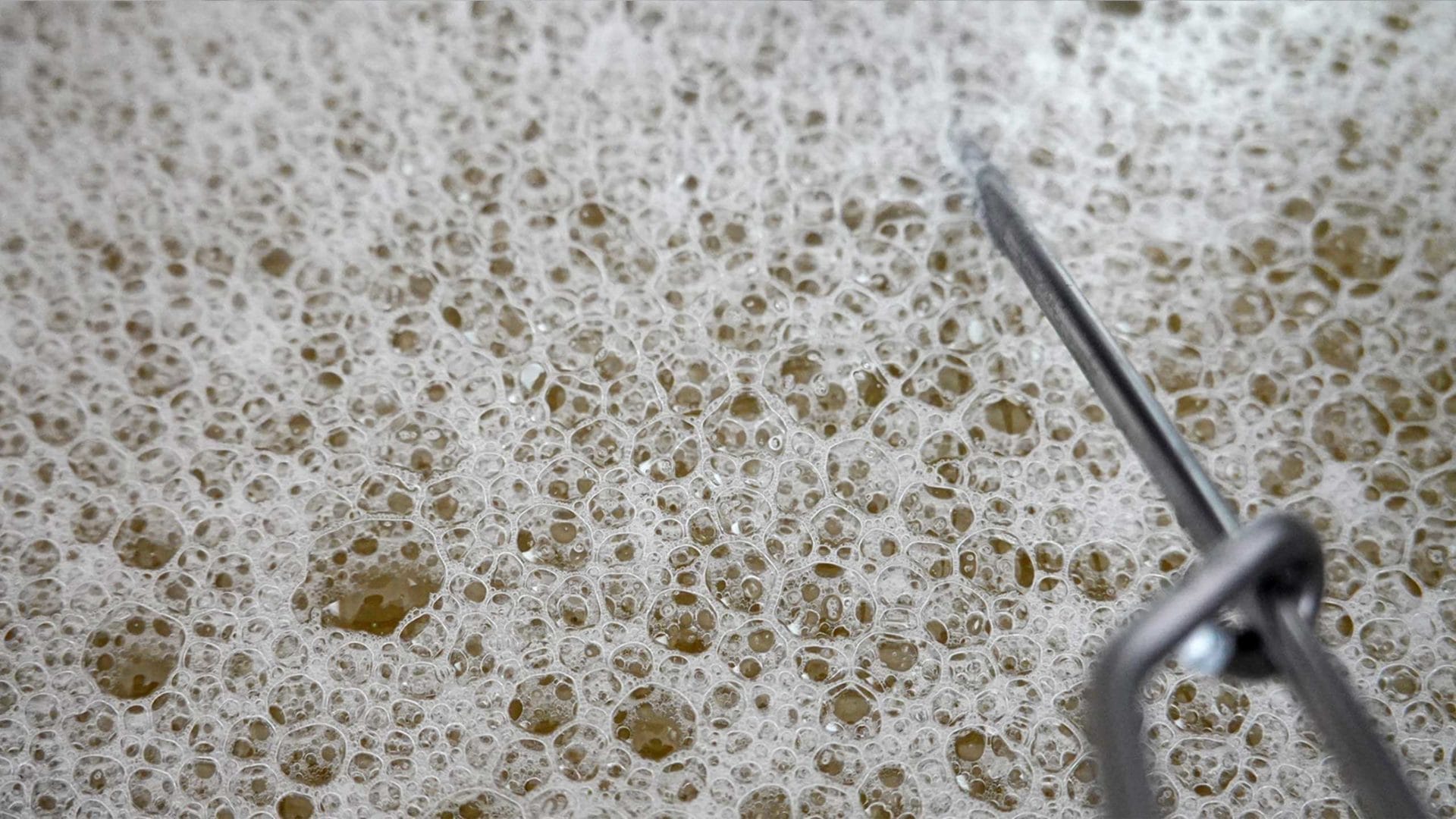
The mead is ripe
In January, as reported, we had prepared a mead with our own honey and freshly squeezed apple juice. Since then, a lot has happened in the fermentation balloon. At the end of February, we took the mead off the lees for the first time: This involves using a hose to transfer the mead into bottles without the lees, cleaning the balloon, and then refilling the mead. After the first taste test, we found it very tart and not yet quite how we imagined our mead. We then added some more honey and let a second fermentation start.
Now, at the end of April we bottle the mead, where it can continue to mature. With the help of a PVC hose and negative pressure, the mead is bottled. There is virtually no turbidity left in the mead, thanks to the clean drawdown in February. There is a slight fermented honey scent in the air. The tasting will show how our mead has evolved. A classic tasting of wine takes place in three stages: Color, smell and taste are evaluated.
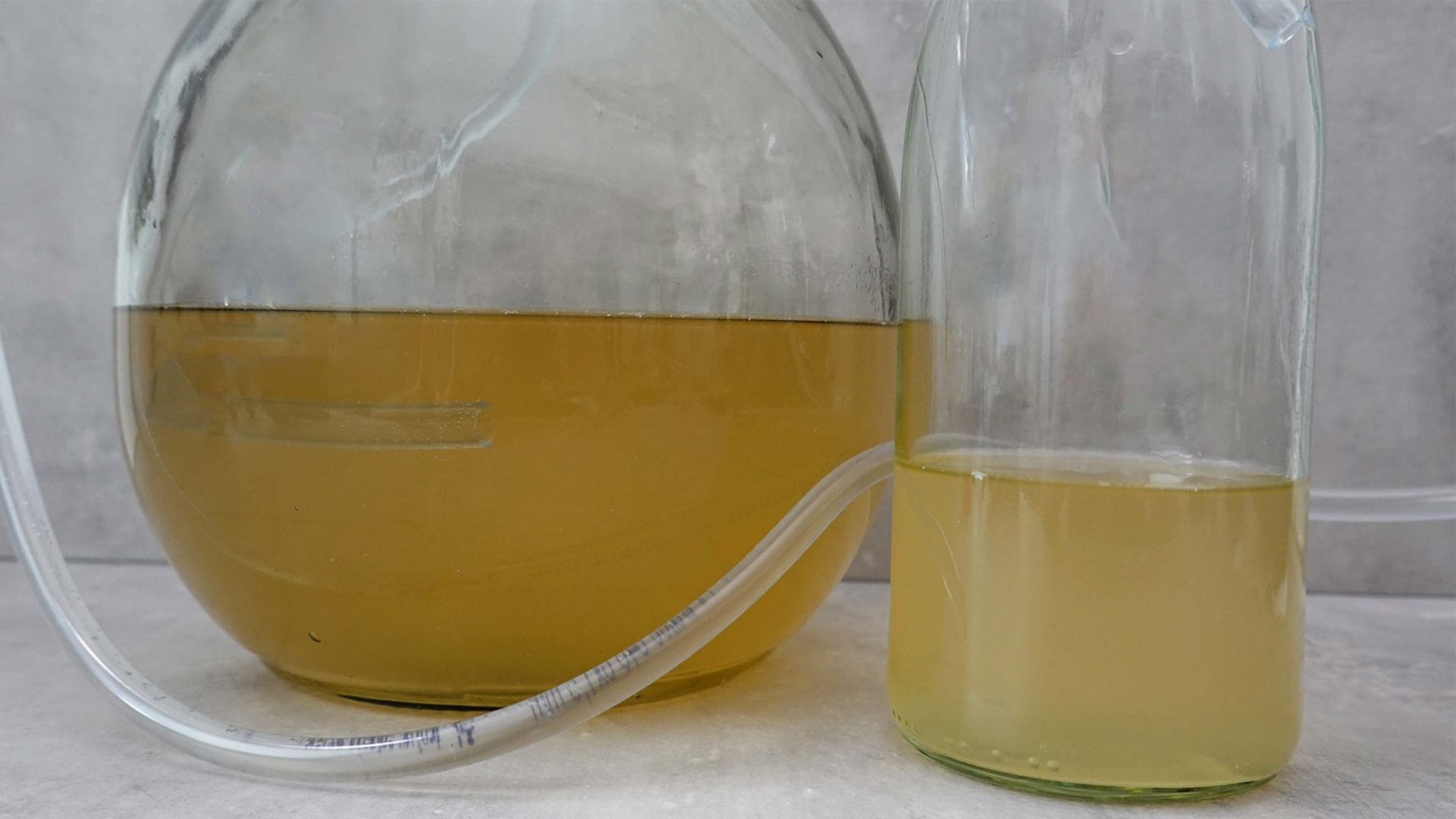
The sample
Color: very light, slightly yellowish
Smell: At the first smell test we are met by a very alcoholic, liquor-like smell and aromas that we have already perceived in the honey, light floral and earthy notes. Chemical notes like from glue also play into it. Also added are yeasty wood notes, but the honey is present in the foreground.
Taste: somewhat edgy, unbalanced and acidic. It tightens the palate a little (so it is astringent). In addition to alcohol, tannins and acids from the Boskop provide this slightly furry mouthfeel, which is also known from strong, tannin-containing red wines. It also has musty, corky notes and something of sherry or port. Also, something slightly soapy. However, if the mead is allowed to breathe for a moment in the glass, it becomes more harmonious, seems less acidic and the honey notes come out very nicely.
More than Middle Ages and Vikings
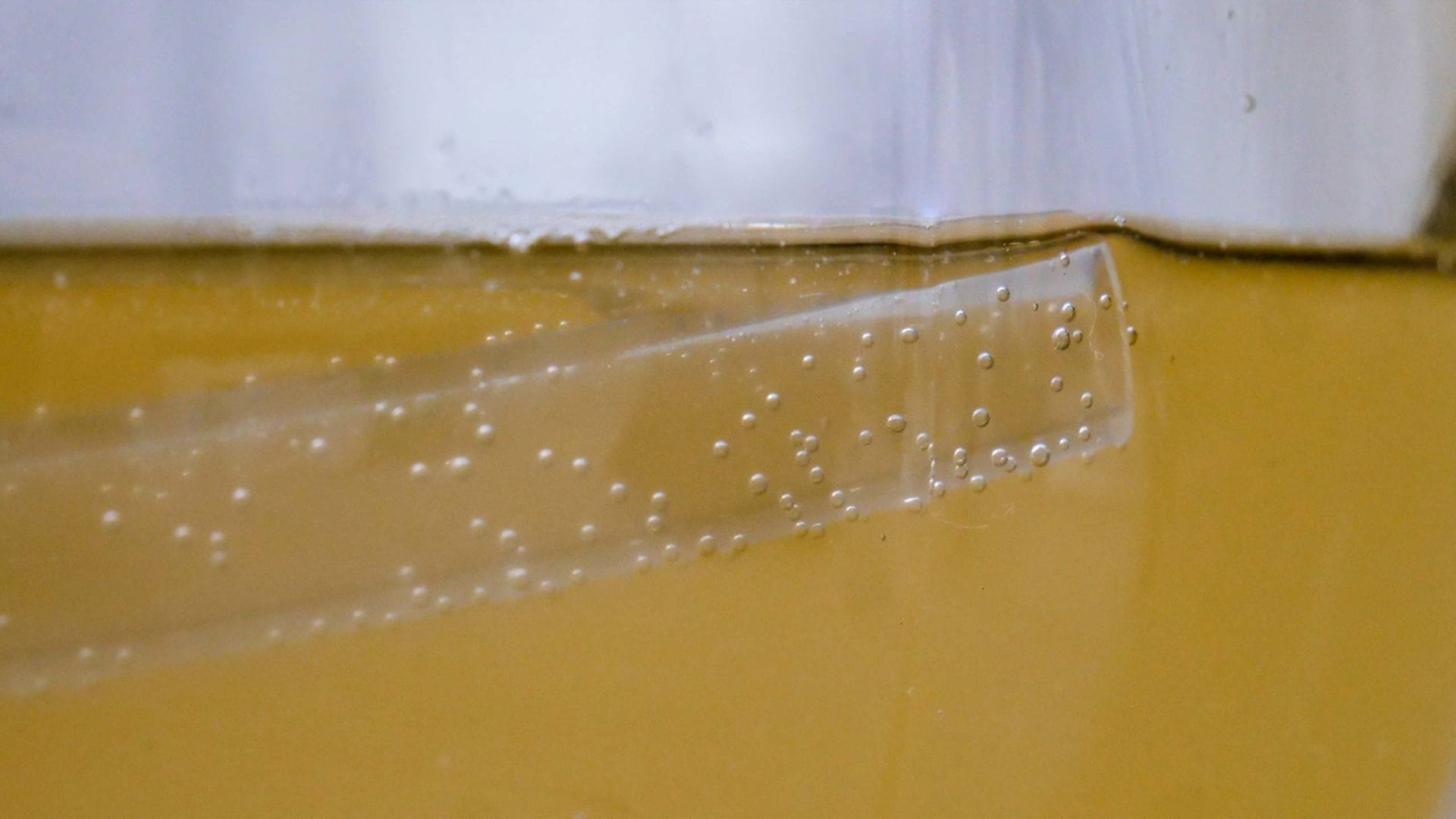
According to our research, mead is mature and flavorful only after 6 to 12 months. So we still have a good chance of making our Met a little more rounded. If we close our eyes, it momentarily reminds us of a tart, fresh white wine. Admittedly with somewhat special notes but they are familiar to us from natural wines and make for very interesting new flavor images. In any case, a drink that does not have to be left to medieval markets, Vikings and Lord of the Rings fans. Mead not only tastes of the wild past and fantasy worlds, mead can definitely be a contemporary alternative to wine and beer – It’s a real thing!
We could not clearly measure the alcohol content. A refractometer is used to determine the sugar content in Brix and then the alcohol content is calculated using formulas. According to this, our honey wine has about 5.52% but our perception is that it is higher. For a commercial mead, the value is 11 vol. % to 16 vol. % also significantly above.
We now let our mead stand for another few months and will open the bottle again in the fall. So look forward with us to Met 3 – The bottle is far from empty.
